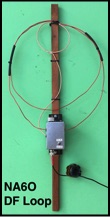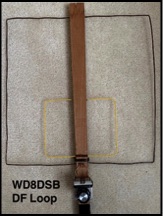RECOMMENDED FOR AMATEUR RADIO STATION USE
Probably undetectable at most ham stations.
Feit 75W eq. dimmable LED PAR30 flood lamp, medium base
Feit 100W eq. dimmable LED bulb, medium base
GE 65W eq. dimmable BR30 flood lamp, medium base
Lights of America 8140SE2-WH5 4-foot LED shop light (reported by W1VLF, ARRL Lab)
Samlex SEC-1235M 13.8V/30A power supply
Powerwerx SS-30DV 14.1V/25A power supply
HP DPS-750AB-3A 12V 750W Server Power Supply (surplus)
NA6O low-noise 12V to 5V 2Amp dc-dc converter module
Cyberpower 1500VA UPS, CP1500AVRLCD or similar (NA6O, K9YC, and others experience)
Lutron MA-PRO-LA Maestro dimmer. Expensive ~$75. Hard to find. (Lutron engineer recommended)
Mean Well RSP-3000-xx DC supply (tested by NA6O but not formally)
Recommended Generators
This is based on numerous “no RFI” reports from reliable hams:
Generac Guardian series 16-20 kW
Recommended 12 VDC to 120 VAC Inverters
GoPower Model GPSW-300 (300 W) (Very clean per W0LEV)
Recommended Battery Chargers and Tenders
DLS Chargers from https://www.iotaengineering.com/ (Many good reports)
Recent BMW models very quiet per K6KM.
Recommended Solar-Related Equipment
Tesla Power Wall (Reported clean by K9YC)
Enphase with IQ7+ microinverters (Reported generally clean but YMMV)
Fronius or SMA inverters (Reported generally clean but YMMV)
Recommended HVAC Equipment
Carrier Infinity air conditioner and gas furnace (2024, owned by NA6O)
Bryant Evolution ductless heat pump. (2024, tested by NA6O)
Mitsubishi mini-split MUZ-GL12NA. (2020, owned by NA6O)
BORDERLINE (or OK after some user modification)
With some modification such as external filters, may be acceptable.
Cree 100W eq. dimmable LED bulb, medium base
DLI Smart Switch ethernet power distribution unit, 1U rack mount
MP1584EN DC-DC buck converter module, generic Chinese
Tripp-Lite SU1000RTXL2UA rackmount UPS
NOT RECOMMENDED
Avoid these.
Elite RL675 8-inch flush LED light fixture
LM2596 DC-DC buck converter module, generic Chinese
Commercial Electric DL-N28A11FR1-27 Round LED Light Fixture
Torchstar LSDDL-19W6D50 6” LED recessed retrofit (reported by K6OK)
SolarEdge solar systems with Panel Optimizers (generally problematic)
Drowning in Radio-Frequency Interference (RFI)
As an amateur radio operator on a small suburban lot, my receiver is under constant assault from a wide variety of RF noise generators. Everything from LED light bulbs to plasma TVs to networking equipment to defective streetlights have caused me all kinds of grief. Further down the page are some favorite references on RFI. I will not attempt to repeat what they say. They cover all the important topics, especially locating noise sources and mitigation procedures.
After a year-long trip to hell and back dealing with my neighbor’s LED light fixtures, I have decided to start characterizing various electrical devices, such as LED lights, and showing you which of them are the good and bad actors. Detailed reports appear below.
References and Articles
The ARRL RFI Book. Comprehensive. Everything you need to know.
RFI, Ferrites, and Common Mode Chokes For Hams by Jim Brown, K9YC. Jim is a leader in the application of ferrite materials and other techniques for interference reduction.
Build Contesting Scores By Killing Receive Noise by Jim Brown, K9YC. This focuses on locating and mitigating noise in receiving systems.
http://k9yc.com/KillingReceiveNoise.pdf
Finding and Killing Receive Noise. A presentation I give at ham clubs: Finding_Noise_NA6O.pdf
Severe RFI: Neighbors, ARRL, FCC, and Me. The complete process from detection to resolution: Severe_RFI_NA6O.pdf
How to make a direction finding antenna: Handheld_DF_Antenna.pdf
And an even simpler DFing antenna from WD8DSB
Homebrew sniffer probes and current probes for measuring common-mode current.
Recommended LED Lights Power Supplies, etc.
This list will grow over time. Obviously there is an almost infinite marketplace full of devices that may generate noise and I can only afford to buy a few here and there. If you have something you want tested, I would be happy to do so; contact me and ship it over. Note that the primary emphasis here is on the HF bands, 1.8-50 MHz, but I do take data up to 150 MHz and note any obvious VHF issues. Click on a link for full info and data, and become a wise consumer. Items showing "Reported by" are from people who I trust 100% for reliable RFI testing. Rumors from Eham do not count!
My experience has shown that virtually every LED light fixture is a serious RFI generator. When in doubt, they should be avoided, but at the very least you should purchase a sample device and test it at your station.
My FCC Part 15 Measurement System
The figure below shows my test system. This follows the standard setup required for FCC and CISPR conducted emissions testing. Please note that I am not running a certified testing laboratory, but my results are reproducible and internally consistent. After 35 years as an instrumentation engineer, I usually get things right...
The heart of the system is a Line Impedance Stabilization Network (LISN) that I built, again based on commercial instruments and standards. Full details are in this writeup. It provides three things: Lowpass filtering to eliminate external noise from the AC line; a stable 50-ohm impedance for the device under test; and outputs for analyzers. I use a spectrum analyzer as well as an oscilloscope to document the RFI, and that is the data that is presented in my reports.
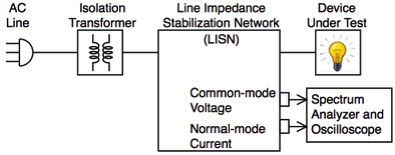
FCC Part 15 calls only for normal-mode (NM), or differential, noise voltage measurements, that is, line to ground and neutral to ground. However, we know from practical experience that this may be insufficient. In fact, common-mode (CM) noise--current flowing in phase on all conductors--is the primary source of radiated energy. In essence, all the wires to the device comprise the antenna, and the common-mode current is what excites that antenna. For that reason, I included a current transformer into my LISN that directly measures CM current. This is data that you will not find reported elsewhere. I use units of dB uA for this current. You can actually convert that to power delivered to an antenna if you like. Knowing the current, just multiply Amps (squared) by a nominal antenna impedance, and you have a (very rough) estimate of power.
NM voltage noise is still important, however, because some devices I have tested have proven to deliver much larger signals on one lead than the other. In that case, application of CM filtering alone (i.e., a CM choke) may be insufficient for mitigation.
A final observation that I make is a qualitative survey of radiated signal taken with a portable shortwave radio and a small direction-finding antenna. I use this rig all the time for locating noise sources and it is a trusted companion. If I can’t hear it on that radio, I know I will not hear it on my station receiver.
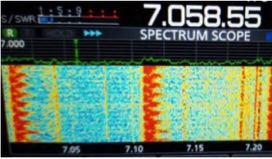
This is NOT what you want...
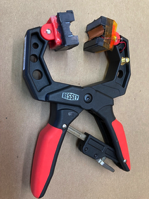
Clamp-on Current Probe
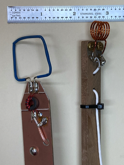
Sniffer Probes
